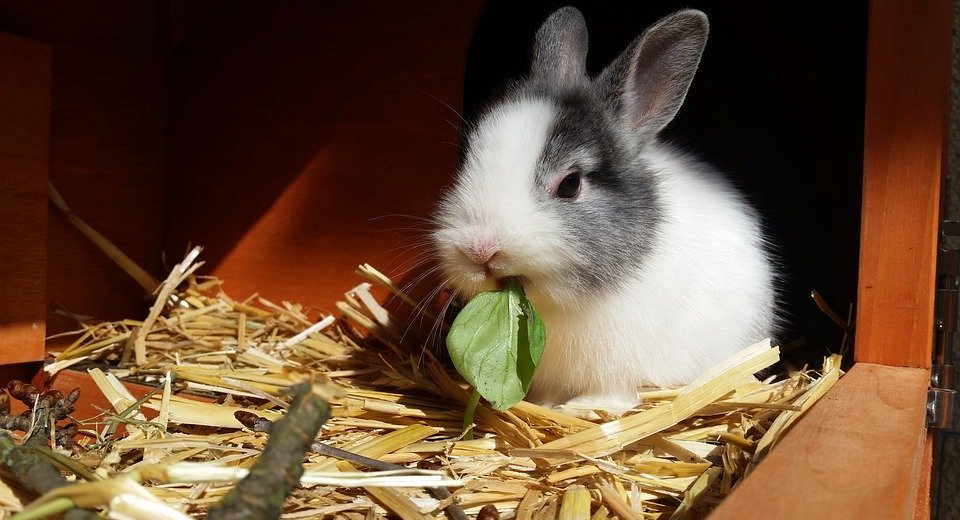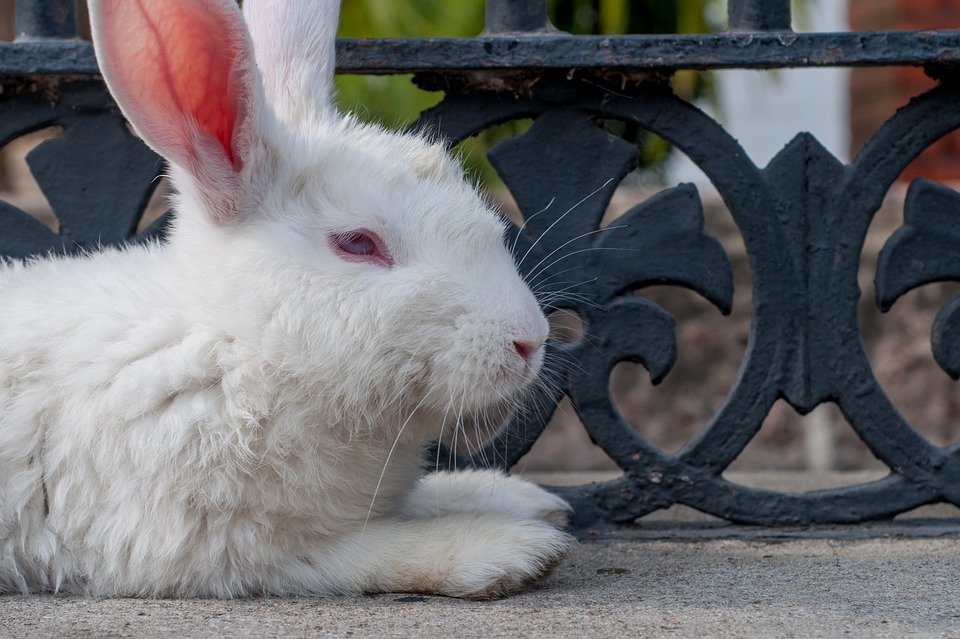This article explores the fascinating relationship between owls and rabbits, examining whether owls regularly include rabbits in their diet. We will delve into the diverse dietary preferences of owls, their unique hunting techniques, and the factors that influence their prey selection. Through understanding the characteristics of both owls and rabbits, we will gain a deeper understanding of the likelihood of owls hunting rabbits and the intricate dynamics of their interactions in the wild.
Part 1: The Eclectic Diet of Owls

1.1. Obligate Carnivores: Owls' Reliance on Animal Matter
Owls, as obligate carnivores, exclusively consume animal matter for sustenance. They are apex predators, playing a vital role in regulating populations of smaller animals within their ecosystems.
1.2. A Diverse Menu: Exploring the Range of Owl Prey
Owl diets vary significantly depending on species, geographic location, and the availability of prey. Their menu includes a diverse range of animal species, showcasing their adaptability and importance in maintaining ecological balance.
- Small Mammals: Rodents like mice, rats, voles, and shrews form the cornerstone of many owl diets. They are abundant, relatively easy to catch, and provide a rich source of energy.
- Birds: Owls often prey on small songbirds, sparrows, and even larger birds, especially during the breeding season when chicks are more vulnerable.
- Insects: Insects, particularly beetles, moths, and grasshoppers, are essential components of owl diets, especially during the breeding season when they provide crucial nourishment for growing owlets.
- Reptiles and Amphibians: Lizards, snakes, frogs, and toads are occasionally included in the diets of certain owl species, particularly those inhabiting areas with abundant reptile and amphibian populations.
- Fish: Some specialized owl species, such as the Fishing Owl (Ketupa zeylonensis) and the Eurasian Eagle-Owl (Bubo bubo), have adapted to catching fish in wetlands and rivers.
Part 2: The Art of Silent Flight: Owls' Adaptations for Hunting

2.1. Mastering the Night: Owls' Nocturnal Hunting Habits
Many owl species are primarily nocturnal, hunting under the cover of darkness when their prey is less active. This adaptation allows them to avoid competition with diurnal predators and take advantage of the nocturnal behavior of many of their prey species.
2.2. The Silent Hunter: Evolutionary Adaptations for Stealth
Owls have evolved remarkable adaptations that enable them to hunt silently and efficiently in low-light conditions. These adaptations include:
- Soft Feathers: The soft, downy feathers on owls' wings and bodies reduce noise during flight, allowing them to approach their prey undetected.
- Unique Wing Structure: The structure of owl wings, with serrated edges and a fringe of feathers, further minimizes air turbulence and noise.
- Facial Disk: The distinctive facial disk surrounding the owl's eyes acts as a sound collector, amplifying faint sounds and helping them locate prey in the dark.
Part 3: The Power of Vision and Hearing: Owls' Sensory Prowess
3.1. Exceptional Vision: Adapting to Low-Light Conditions
Owls possess extraordinary vision, enabling them to hunt effectively in low-light conditions. Their large, forward-facing eyes provide excellent binocular vision, enhancing depth perception and allowing them to judge distances accurately.
3.2. Acute Hearing: Pinpointing Prey in Darkness
Owl hearing is incredibly sensitive, allowing them to detect the slightest sounds from potential prey. Their ears are often asymmetrical, with one ear positioned higher than the other, which helps them pinpoint the location of sound sources with precision.
Part 4: The Deadly Strike: Owls' Hunting Techniques
4.1. Swift and Silent: Approaching Prey with Precision
Owls approach their prey with remarkable stealth, using their silent flight and exceptional senses to close the distance undetected. They often hover briefly before launching a swift and deadly strike.
4.2. Powerful Talons: Incapacitating Prey with a Single Blow
Owls possess exceptionally sharp talons, capable of exerting immense force. Their talons are designed for gripping and killing prey, delivering a swift and devastating blow that incapacitates the victim instantly.
4.3. The Importance of Perching: A Strategic Vantage Point
Many owls rely on perching as a hunting strategy. They perch high in trees or on other vantage points, observing their surroundings and waiting for prey to come within striking distance.
Part 5: Rabbit's Role in the Owl's Diet: A Case-by-Case Examination
5.1. The Rabbit as a Prey Species: A Matter of Size and Availability
Rabbits, with their relatively large size, are not a common prey item for most owl species. However, larger owl species, such as the Great Horned Owl (Bubo virginianus) and the Eurasian Eagle-Owl (Bubo bubo), have been known to occasionally prey on young rabbits or smaller rabbit species.
5.2. Challenges of Hunting Rabbits: Agility and Escape Strategies
Hunting rabbits presents challenges for owls. Rabbits are agile, with strong legs and powerful hindquarters that allow them to jump and dart away with impressive speed. They also have excellent hearing and a keen sense of smell, enabling them to detect approaching predators.
5.3. Circumstances Favoring Rabbit Predation: Vulnerability and Food Scarcity
While not a primary food source for most owls, rabbits may become more important in the diet under certain circumstances:
- Young or Sick Rabbits: Young, inexperienced rabbits, or those weakened by illness or injury, are more vulnerable to owl predation.
- Limited Prey Options: During periods of food scarcity, owls may expand their diet to include rabbits, particularly if other prey sources are scarce.
- Geographic Location: Certain owl species found in areas with abundant rabbit populations, such as the Great Horned Owl in North America, may rely more heavily on rabbits as a food source.
Part 6: The Impact of Owls on Rabbit Populations: Regulating and Maintaining Balance
6.1. Predator-Prey Dynamics: A Natural Relationship of Control
The relationship between owls and rabbits is a classic example of a predator-prey interaction. Owls, as predators, play a vital role in regulating rabbit populations by controlling their numbers.
6.2. Maintaining Ecosystem Health: Preventing Overgrazing and Disease Spread
By consuming rabbits, owls help to prevent overgrazing, which can damage plant communities and disrupt the balance of ecosystems. They also target weak or sick rabbits, ensuring that only the fittest individuals survive and reproduce, which helps to prevent the spread of disease within rabbit populations.
Part 7: The Evolution of Owl-Rabbit Interactions: Adapting to Coexist
7.1. A Co-evolutionary Dance: Mutual Adaptation and Survival
Over time, owls and rabbits have evolved alongside each other, each adapting to the presence of the other. Rabbits have developed vigilance and escape strategies to evade owl predation, while owls have refined their hunting techniques to overcome rabbit defenses.
7.2. The Importance of Evolutionary Interplay: Maintaining Balance and Diversity
This ongoing evolutionary interplay, known as co-evolution, ensures the survival of both species and maintains the delicate balance within their shared ecosystem. It promotes genetic diversity and prevents either species from becoming dominant, ensuring the continued health and resilience of the entire ecosystem.
Part 8: The Importance of Owls in the Ecosystem: Apex Predators and Indicators of Health
8.1. Apex Predators: Controlling Populations and Maintaining Balance
As apex predators, owls play a crucial role in maintaining the health and stability of their ecosystems. They help to prevent imbalances that could disrupt the delicate web of life.
8.2. Indicator Species: A Window into Environmental Health and Change
Owls are considered indicator species, meaning their presence and abundance can serve as an indicator of the overall health and biodiversity of an ecosystem. Their sensitivity to environmental changes, such as habitat loss, pollution, and climate change, makes them valuable indicators of the well-being of the environment.
Part 9: Protecting Owls and Their Habitats: Conservation Efforts for a Sustainable Future
9.1. Conservation Priorities: Safeguarding Habitat, Reducing Threats, and Raising Awareness
Efforts to conserve owl populations are crucial for maintaining ecosystem health. These efforts involve:
- Habitat Preservation: Protecting and restoring owl habitats, including forests, woodlands, grasslands, and wetlands, is paramount for their survival. This involves addressing threats such as deforestation, habitat fragmentation, and pollution.
- Reducing Human Impacts: Minimizing threats from human activities, such as vehicle collisions, collisions with power lines, and habitat loss due to urbanization, is essential for owl conservation.
- Public Awareness and Education: Raising public awareness about the importance of owls and their role in the environment is critical for promoting their conservation. Educating people about owl behavior, habitat needs, and the threats they face can help foster a greater appreciation for these magnificent birds.
Part 10: FAQs: Addressing Common Questions About Owls and Rabbits
10.1. Do Owls Ever Eat Adult Rabbits?
While owls primarily target smaller prey, larger owl species, like the Great Horned Owl, have been known to occasionally prey on adult rabbits, especially if the rabbit is sick or injured. However, this is not a common occurrence.
10.2. Are Owls a Major Threat to Rabbit Populations?
Owls are not typically considered a major threat to rabbit populations. They primarily target smaller prey and only occasionally include rabbits in their diet. Other factors, such as habitat loss, disease, and predation by other animals, have a greater impact on rabbit populations.
10.3. Can Owls Kill Rabbits With Their Beak?
Owls use their powerful talons to kill their prey, not their beaks. Their beaks are primarily used for tearing and consuming food.
10.4. Do Owls Always Hunt at Night?
While many owl species are nocturnal hunters, some species, like the Northern Hawk Owl (Surnia ulula), are primarily diurnal, hunting during the day.
10.5. Do Owls Hoot at Night Because They Are Hungry?
Owls hoot for various reasons, including communication, territorial defense, and attracting mates. Hooting is not necessarily an indication of hunger.
10.6. How Can I Tell if There Are Owls in My Garden?
Signs of owl presence include sightings of the owls themselves, owl pellets (undigested remains of prey), and hooting sounds at night. You might also find feathers, shed talon sheaths, or signs of owl nesting in trees or cavities.
10.7. What Can I Do to Attract Owls to My Garden?
To attract owls to your garden, create a suitable habitat with dense vegetation for cover and nesting, and avoid using pesticides that could harm their prey. Provide a source of water, and consider installing a nesting box or platform.
10.8. Are Owls a Threat to Pets?
While owls generally avoid large animals, they may pose a threat to smaller pets, such as cats and small dogs, especially at night. Keep pets indoors at night or supervise them when outside to prevent potential encounters.
10.9. Are Owls Protected?
Many owl species are protected by law due to their declining populations and vital role in the ecosystem. It is illegal to harm or harass owls, and it's important to respect their habitat and space.
This detailed look into the relationship between owls and rabbits reveals a complex and fascinating dynamic. While owls don't typically feast on rabbits, they play a crucial role in maintaining the health of both rabbit populations and the wider ecosystem. By understanding the intricate interplay between these species, we can better appreciate the delicate balance of nature and the vital role that owls play in our world.
Everyone is watching
-

Do Rabbits Lay Eggs? (The Surprising Truth)
OTHER TYPES OF PETSThis article will unravel the common misconception that rabbits lay eggs, exploring the fascinating world of r...
-

Can Rabbits Eat Grapes? A Guide to Safe Rabbit Treats
OTHER TYPES OF PETSThis comprehensive guide will explore the safety and suitability of grapes for rabbits, providing detailed inf...
-

What's a Group of Rabbits Called? (A Comprehensive Guide)
OTHER TYPES OF PETSThis article delves into the fascinating world of rabbits, exploring the various terms used to describe a grou...
-

Predators That Hunt Rabbits: A Guide to Natural Enemies
OTHER TYPES OF PETSI've always been fascinated by the circle of life, that delicate dance between predator and prey. Growing up ...
-

Are Rabbits Nocturnal Animals?
OTHER TYPES OF PETSThe question of whether rabbits are nocturnal animals is a fascinating one, with a surprisingly complex answer...
